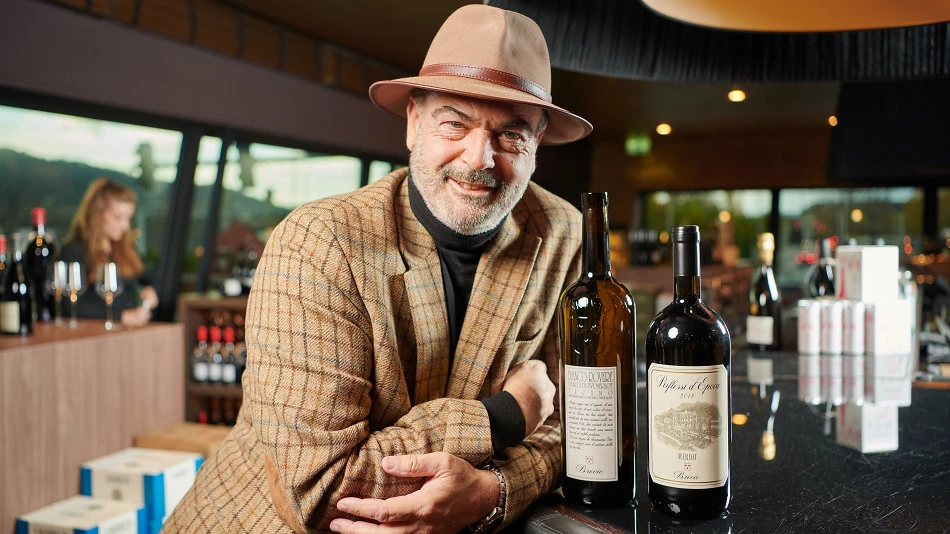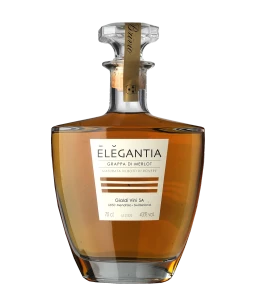Brivio / Gialdi
For most of wine lovers in Switzerland, the name Guido Brivio is no unknown. However, abroad, it is a different story. Only after many years in the trade has he become among the wine experts and professionals of New York or London an insider tip, so to say, from an infinitesimally tiny unknown corner in the great international wine world.
Although Guido’s grandfather was a wine merchant, he didn’t grow up in this industry, or even on a wine estate. At home, life didn’t revolve around grapes, but artichokes! His mother and uncle jointly possessed the Swiss production rights for Cynar. Only after studying business in London did the young Guido decide to study oenology in Bordeaux. His mother was delighted, as she saw that a certain family tradition could now continue. There then followed a stay in Sonoma Valley, California, where he became acquainted with American wine producers’ carefree, adventurous way of working.
Sparkling wines from Brivio / Gialdi
White wines from Brivio / Gialdi
Rosé wines from Brivio / Gialdi
Red wines from Brivio / Gialdi
Spirits from Brivio / Gialdi
from Brivio / Gialdi
Back in Mendrisio, his objective was clear: his own wines, which would would stand clearly apart from all others in the canton of Ticino. His family provided strong support, and upon the purchase of a winery in 1989, he was able to begin production and realise his ideas. Such as, for example, maturing the wines in barriques and pressing a white wine from the red Merlot grapes. The Bianco Rovere, which was moreover also matured in barriques, also represented a mini revolution, bordering on blasphemy for some of Ticino’s inhabitants. However, there were others, even though few in number, who supported him right from the outset.
Guido Brivio’s business has grown continuously for more than 25 years. Today, he counts among Switzerland’s most successful wine producers. Since 2001, he shares a joint venture with the just as famous winegrower, Feliciano Gialdi. The winery is located in Mendrisio, at the foot of the Monte Generoso. The cellars are hewn out of the rocks, and these cellars ensure the finest wines, kept in barriques, are kept at a naturally constant temperature. They previously served as larders for a grotto (rustic restaurant), and therefore housed not just wine but also ham, salami, cheese and other foodstuffs. The building next door houses the winery, with its state of the art infrastructure.
Guido Brivio doesn’t own his own vineyard. He works in partnership with winegrowers who supply him with the grapes. Some of these relationships go back decades. Some are professional growers, but other suppliers are families who own just a few rows of vines but cultivate them lovingly. And of course, only the very highest quality grapes are accepted.
These originate from the so-called Sottoceneri, the part of the canton of Ticino that lies to the south of Monte Ceneri. The area comprises the Lugano, Malcantone and Mendrisiotto regions. The soil is chalky and contains a greater proportion of lime than in the Sopraceneri, where predominantly granite stone formations with a low chalk content are found. The climate is influenced by the Alpine region as well as by the nearby Po Valley and Mediterranean sea. Although this area, Switzerland’s sun lounge, with its more than 2000 hours of sunlight a year, counts among the sunniest areas of our country, at the same time, its approximately 1800mm rain a year also makes it the region with the greatest rainfall. Around 1000 hectares are planted with grapes, of which more than 800 are planted with Merlot. This variety of grape, which was only introduced to the southernmost canton at the start of the 20th century, has become Ticino’s true hallmark. However, smaller areas of other white and red grape varieties are also cultivated. Guido Brivio’s range can therefore be seen as a mirror image of Ticino’s vineyard region and people: exciting, diverse, steeped in tradition, modern and likeable.

Producer

Domaine de la Commaraine
The beauty behind the walls of Château Commaraine
The Burgundian municipality of Pommard has a classic, historic ambience with most of the buildings and walled vineyards (clos) intact, exuding a peaceful and tranquil atmosphere. The small, romantic village square conveys a slightly exotic feeling to its visitors – an unusual sensation in rural Burgundy indeed!

Domaine Cornulus
What started out from humble beginnings over 20 years ago is now one of Valais’ flagship wineries and the byword for both a way of working in harmony with nature and premium wines, all of which strongly bring out their individual terroir.


















